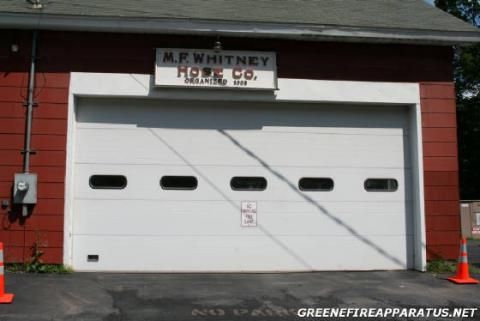
Above: M.F. Whitney Hose Company in Phoenicia. Photo by GreeneFireApparatus.net.
It's not our roads - though in most cases they're not getting any younger. And it's not our bridges either. For unwanted reasons, most of them are slated for emergency upgrades. When Hurricane Irene hit hard, the infrastructure that held Shandaken together was the volunteers who make up our fire departments.
I live close to M.F. Whitney Hose Company in Phoenicia, and hardly a day goes by when they don't have to respond to something. When Irene hit last week, they had to respond to everything. They, and the volunteers at Shandaken's other fire stations and those at volunteer fire departments throughout upstate New York, became our first -- and in some cases only -- line of defense against calamities bearing down on most of us.
Today, I look over at the M. F. Whitney Hose Company and see a beehive of competent professionals from a dozen local and state agencies and some private companies as well. In the wake of Irene, the M. F. Whitney Hose Company Station is now the Shandaken Emergency Command Center. Alongside the professional emergency responders, the volunteer fire department continues to make critical contributions to the disaster response efforts.
But when Irene first bore down on us, our volunteer fire department, emergency ambulance crews, and a few police officers were all Shandaken could count on in the storm. As outside help -- some of that from other volunteer fire departments -- began to arrive after the hurricane, Shandaken volunteer firemen and women were there to greet, to host, to orient, and to conduct briefings on the urgent work still needing to be done.
If you were born and raised in the town of Shandaken, the chances are good that you have close family or friends who are volunteer firemen or firewomen, if you aren't already one yourself. Disproportionately, it is the long-time residents of Shandaken, and more often the lifelong residents of Shandaken, who fill the ranks of our volunteer fire departments. When duty calls, and it does so constantly in small rural communities, they are the ones who step up to meet that call.
I am not a life-long resident of Shandaken. By some standards, including my own, my nine years spent living here do not qualify me as a longtime resident either. I help out a little at the M. F. Whitney Hose Company. Actually, make that very little. I've sold raffle tickets for them, gone out shopping for things they've needed, and played minor supporting roles at some community events they have organized. I can't even say that I do that regularly. I am in no way a first responder. I haven't taken the extensive training needed to become one. I am officially not a volunteer fireman, but still my involvement is welcomed.
Call it the locals vs. the newcomers. That's a drama being played out in countless rural towns across America, especially in ones that ex-city-dwellers find picturesque or charming. That script is followed in Shandaken also, but usually it's not the dominant plotline here. Mostly, Shandaken is tolerant. Mostly, Shandaken is inclusive. Mostly, Shandaken pulls together when it matters, like in times like these. But that fault line still runs through Shandaken. On occassion there is some friction, but mostly it stays submerged.
People like me who moved to Shandaken did so because we love it here. We take quiet pride in our good judgment to have chosen Shandaken for our home - even if it was pure dumb luck that brought us to Shandaken in the first place. But how much do relative newcomers like me really love this town? Do we love it enough to defend it from natural and man-made disasters? Do we love it enough to rise from our beds at 3:00am to help out some stranger in need?
The members of Shandaken's volunteer fire departments do. We count on them for that. We write annual checks to support them in those efforts, but they are not getting any younger as a team. A relative few firefighters are in their twenties. Some more are in their early thirties. But most of the volunteers who make up our volunteer fire departments now tend to be in their forties, their fifties, or older still.
When that huge storm hits in 2021, who will we count on to be our first responders then?
Tom Rinaldo writes the Dispatches from Shandaken column for the Watershed Post's Shandaken page three times a week. Email Tom at tomrinaldo@watershedpost.com. This column is dedicated to the men and women who serve in our volunteer fire departments - literally our heroes.











